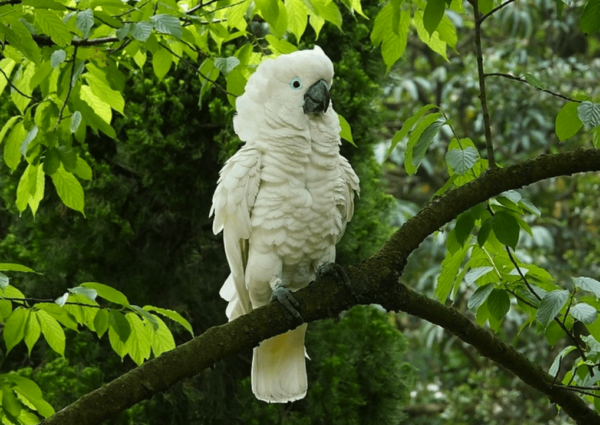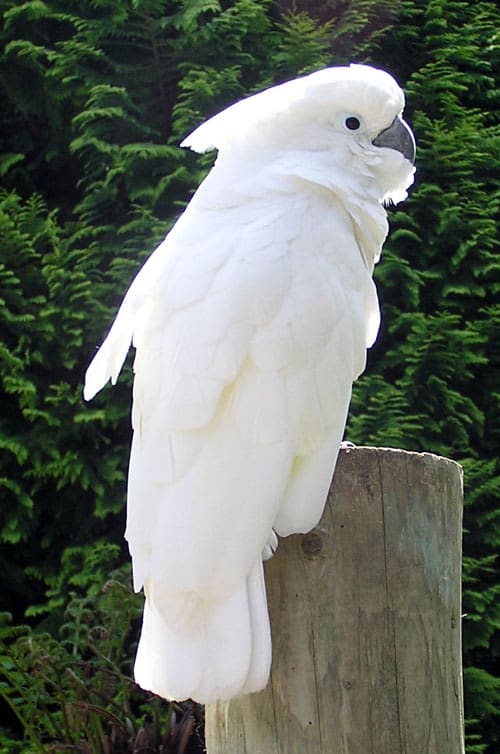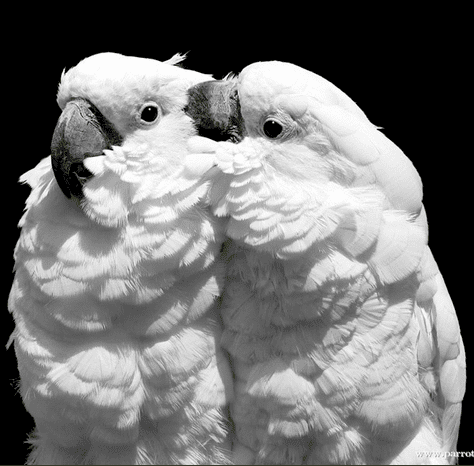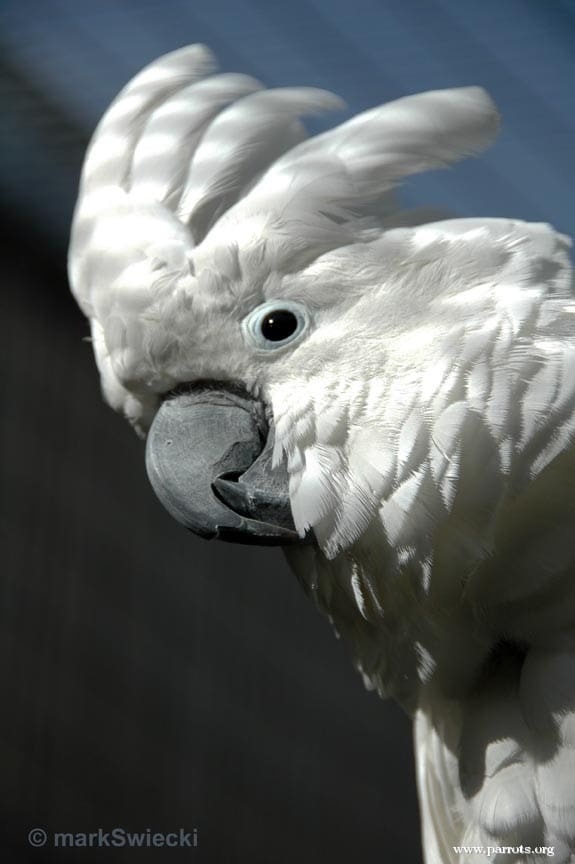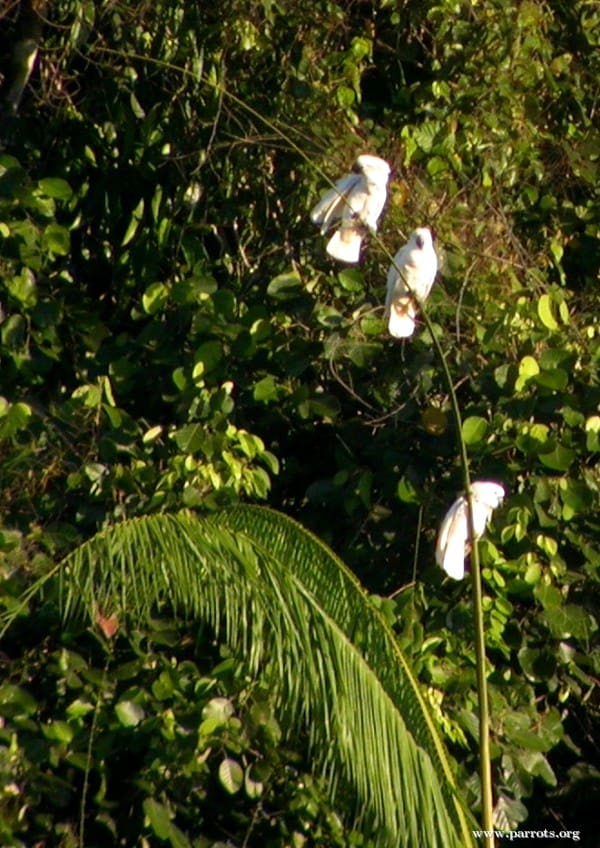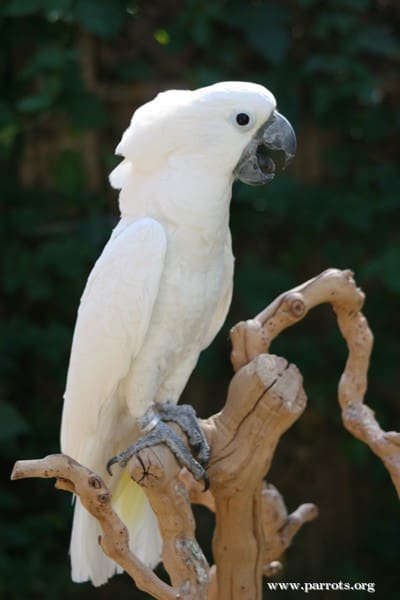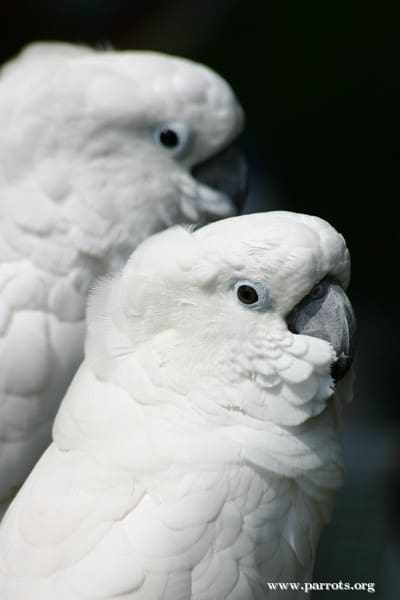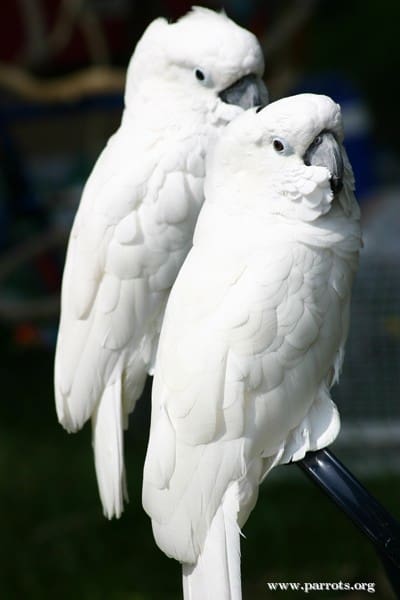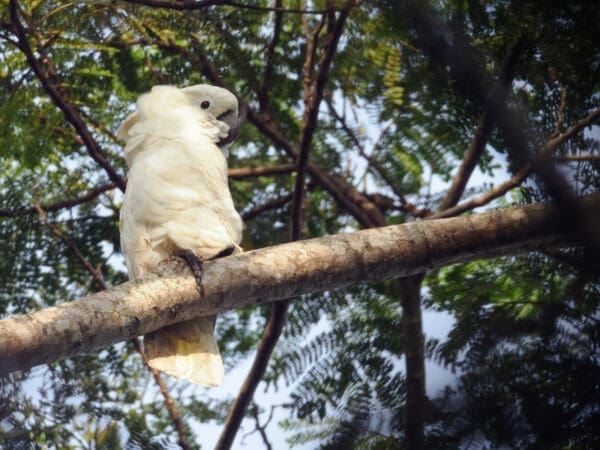![© 孫鋒 林 [CC BY-SA 2.0] via Flickr A wild White-crested Cockatoo puffs out its feathers](https://parrots.org/wp-content/uploads/2023/01/White-crested-Cockatoo-e1731007973357-100x100.png)
![© User Arpingstone on en.wikipedia [Public Domain] via Wikimedia Commons](https://parrots.org/wp-content/uploads/2023/01/wpt_White-crested-Cockatoo_1095-9-100x100.jpg)
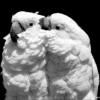
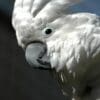
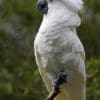
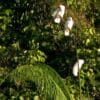
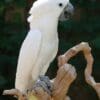
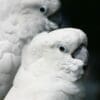
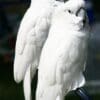
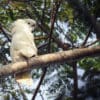
DID YOU KNOW?
Male White-crested Cockatoos have dark brown eyes, females red-brown.

Cacatua

alba
Size:
46 cm (18 in)
Weight:
550 g (19.25 oz)
Subspecies including nominate:
one
Colour Adult:
Both adults completely white; have backward curving crest; yellow suffusion under wings. Eye ring off white. Eye dark brown in male, red/brown in female.
Colour Juvenile:
As adult but with dark grey eye.
Call:
Loud, grating screech; alarm sound is a hiss.
White-crested Cockatoo – AVoCet Cornell Lab Macaulay Library
More Information:
WPT-supported project – Fighting Parrot Trafficking in Indonesia
Content Sources:
CITES
Avibase
BirdLife International
Cornell Lab of Ornithology/Birds of the World
A Guide to Parrots of the World, Juniper and Parr, 1998
Parrots of the World, Forshaw and Cooper, 1989.
Vanished and Vanishing Parrots, Forshaw, 2017.
Parrots of the World, Forshaw, 2006.
Parrots in Aviculture, Low, 1992.
Avian Pediatric Seminar Proceedings, 1988.
Psittacine Aviculture, Schubot, Clubb and Clubb, 1992.
Parrots: Status Survey and Conservation Plan 2000-2004, Snyder, McGowan, Gilardi and Grajal, 2000.
Captive Status:
Common
Longevity:
40-60 yrs
Housing:
Walk-in aviary, minimum length 3 m (9.8 ft).
Diet:
Mixture of small seeds: canary, oats, safflower; spray millet, limited sunflower seed, dry, soaked or sprouted; sprouted beans such as mung, peas; corn on the cob, green leaves such as: Swiss chard, lettuce, dandelion, chickweed; fresh vegetables such as: carrot, celery, zucchini, green beans, peas in the pod; fresh fruit such as: apple, banana, orange, cactus fruits and others; complete kibble, walnuts, hazelnuts, pecans, roasted peanuts.
Enrichment:
Bird-safe chewables (fir, pine, elder, willow or sterilized pine cones), different sized perches, ladders, large link chains (durable plastic) swings, bathing using overhead misters or spray bottles, socialization.
Nest Box Size:
Vertical box 12″ x 12″ x 36″ (30.5 cm x 30.5 cm x 91.5 cm).
Clutch Size:
2
Fledging Age:
13-15 weeks
Hatch Weight:
—
Peak Weight:
—
Weaning Weight:
—
World Population:
43,000-183,000 individuals (1993). Decreasing rapidly. No recent estimate has been made.
IUCN Red List Status:
Endangered
CITES Listing:
Appendix II
Threat Summary:
Is affected by trapping and habitat loss. Currently, both adults and young are taken for trade. CITES data show significant exploitation during the 1990s. Recent data project forest losses of 20-30% over three generations. Forest loss likely exacerbates trapping owing to the creation of better access to nesting trees. Significant changes in forest cover on Halmahera appear to have driven a concomitant decline in the cockatoo population. Legal trade has decreased but is still widespread and ill-enforced; illegal unrecorded and unregulated trade is highly likely, so the population is inferred to be rapidly declining.
Range:
Found on Halmahera, Bacan, Ternate, Tidore, Kasiruta and Mandiole Islands in N Moluccas, Indonesia.
Habitat:
Found in lowland and hill forest up to 600 m (1968 ft). Are able to adjust to secondary growth.
Wild Diet:
Forages on arboreal seeds and fruits; birds observed bark-peeling and investigating epiphytes, suggesting that they may also eat insects.
Ecology and Behaviour:
Spends most of its time in the forest canopy, seen in pairs or small groups. Gathers in larger groups at dusk to roost.
Clutch and Egg Size:
2 elliptical eggs, 41.0 x 31.0 mm (1.6 x 1.2 in).
Breeding Season:
April-August. Nest is in cavity in large forest tree.
